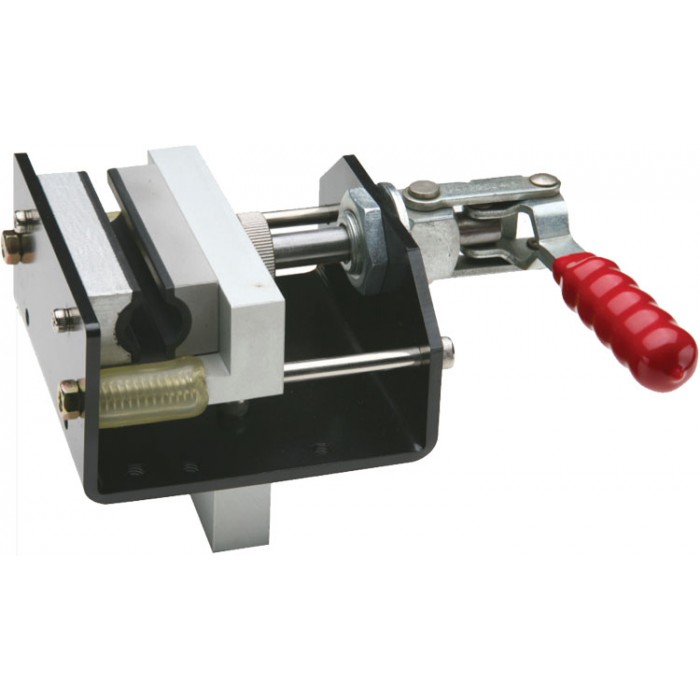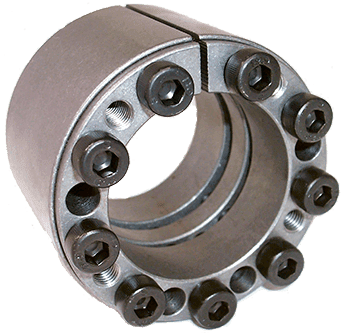Product Description
JINGBANG FASTENER
Customized as per the sketch
Customized as per the 2D/3D drawing
Customized as per the samples
LOW MOQ / FREE SAPMLE FAST RESPONSE
OEM Service:
1, Customized diameters.
2, Customized material, SS201, SS304, SS316, or brass, etc.
3, Engrave LOGO.
Product Description
304 Stainless Steel Hose Clamp
52-76 showed that the min diameter is 52 mm, max dliameter
Detailed Photos
Packaging & Shipping
We can also purchase and complete packaging according to customer requirements, such as blister boxes, rustproof paper, pearl cotton packaging, and we promise not to make a penny on extra packaging.
Company Profile
After Sales Service
1. Any inquiries will be answered within 24hours, we have been tilling in the fasteners business for more than 10 years.
2. Professional fasteners supplier.
3. OEM available:
1)Customized logo.
2)Any idea of yours on the fastener project, we can manage to fulfill and put it into production
4. High quality, fashion leading, reasonable&competitive price
5. After-sale service:
1) All products will go through strict quality check in our factory before packing, we have experienced QC team who is in charge of quality checking before shipping.
2) All products will be well packed before shipping
6. Fast delivery
FAQ
| 1, How to ensure hose clamp ring every process’s quality? |
| hose clamp ring Every process will be checked by our quality inspection department which insures every product’s quality. In the production of products, we will personally go to the factory to check the quality of products. |
| 2, hose clamp ring delivery time? |
| For products we have stock hose clamp ring, within 15 days; If customized, according to your quantity, about 20-25days. |
| 3, What is your payment method? |
| Paypal, Alibaba, 30% value of T/T in advance and other 70% balance before shipping. For small order less than1000USD, would suggest you pay 100% in advance to reduce the bank charges. |
| 4, Can you provide hose clamp ring sample? |
| Sure, for stocked hose clamp ring, we will provide free samples and you will be charged for shipping. |
/* January 22, 2571 19:08:37 */!function(){function s(e,r){var a,o={};try{e&&e.split(“,”).forEach(function(e,t){e&&(a=e.match(/(.*?):(.*)$/))&&1
| Material: | Stainless Steel |
|---|---|
| Usage: | Heavy Duty Clamp, Pipe Clamp, Glass Clamp |
| Structure: | G Clamp |
| Standard: | Standard |
| Condition: | New |
| Brand: | Jb |
| Samples: |
US$ 1/Piece
1 Piece(Min.Order) | On request
|
|---|
| Customization: |
Available
| Customized Request |
|---|

What are the temperature and corrosion resistance properties of shaft clamps?
When it comes to the temperature and corrosion resistance properties of shaft clamps, here’s a detailed explanation:
Temperature Resistance:
Shaft clamps are designed to operate within specific temperature ranges based on the materials used in their construction. The temperature resistance properties of shaft clamps depend on the materials’ thermal stability and their ability to withstand temperature variations without significant deformation or loss of functionality.
Common materials used in shaft clamps with good temperature resistance include:
- Stainless Steel: Stainless steel shaft clamps offer excellent resistance to high temperatures, typically up to 800°C (1472°F). They maintain their mechanical strength and structural integrity even at elevated temperatures. Different grades of stainless steel may have varying temperature limits, so it’s important to refer to the manufacturer’s specifications.
- Alloy Steel: Alloy steel shaft clamps can withstand high temperatures, typically up to 500°C (932°F) or higher, depending on the specific alloy composition. These clamps offer good mechanical properties and are commonly used in applications where high-temperature resistance is required.
- Specialized Alloys: Some shaft clamps are made from specialized alloys designed to withstand extremely high temperatures. These alloys, such as Inconel or Hastelloy, exhibit exceptional heat resistance and can operate in temperature ranges exceeding 1000°C (1832°F).
Corrosion Resistance:
Corrosion resistance is an important property for shaft clamps, especially in applications where they may be exposed to moisture, chemicals, or harsh environments. The corrosion resistance properties of shaft clamps depend on the materials used and any additional protective coatings or treatments applied.
Here are some materials commonly used in shaft clamps with good corrosion resistance:
- Stainless Steel: Stainless steel shaft clamps are known for their excellent corrosion resistance. They resist oxidation, rust, and most chemicals, making them suitable for a wide range of applications in various environments.
- Aluminum: Aluminum shaft clamps offer good corrosion resistance due to the formation of a protective oxide layer on the surface. However, they may not be suitable for highly corrosive environments or applications involving certain chemicals.
- Coated or Treated Materials: Some shaft clamps are coated or treated with corrosion-resistant materials or coatings, such as zinc plating, epoxy coatings, or specialized polymer coatings. These additional protective layers enhance the clamp’s resistance to corrosion and extend its lifespan in challenging environments.
It’s important to note that the temperature and corrosion resistance properties of shaft clamps can vary depending on the specific materials, manufacturing processes, and coatings used. It’s recommended to refer to the manufacturer’s specifications and consult with suppliers or industry professionals to ensure that the shaft clamps you choose meet the required temperature and corrosion resistance requirements for your specific application.

Can I get advice on choosing shaft clamps for applications with varying loads?
Yes, you can receive advice on choosing shaft clamps for applications with varying loads. When selecting shaft clamps for such applications, it is important to consider certain factors to ensure optimal performance and reliability. Here are some key points to consider:
- Load Capacity: The first and foremost consideration is the load capacity of the shaft clamp. Determine the maximum expected load that the clamp will need to handle in your application. This includes both static loads (constant loads) and dynamic loads (loads that change over time). Check the specifications provided by the manufacturer to ensure that the selected shaft clamp can withstand the anticipated loads.
- Material Strength: The material strength of the shaft clamp is crucial for applications with varying loads. Higher strength materials, such as stainless steel or hardened alloys, are often preferred as they offer better resistance to deformation under heavy or fluctuating loads. Consider the material properties of the shaft clamp and choose a material that matches the load requirements of your application.
- Clamping Mechanism: Different shaft clamps employ various clamping mechanisms, such as set screws, split collars, or compression clamps. Evaluate the effectiveness of the clamping mechanism in maintaining a secure grip on the shaft under varying loads. Some mechanisms may be better suited for specific load conditions, so choose a design that aligns with the load characteristics of your application.
- Adjustability: Applications with varying loads may benefit from shaft clamps that offer adjustability. Look for clamps that allow for easy adjustment or repositioning of the clamp along the shaft. This flexibility enables fine-tuning the clamping force, accommodating different load conditions, and optimizing the performance of the assembly.
- Anti-Vibration Features: In applications with varying loads, vibration can be a concern. Consider shaft clamps that incorporate anti-vibration features, such as damping elements or serrated contact surfaces. These features help minimize the effects of vibrations, ensuring a secure connection between the shaft and the components even under dynamic load conditions.
- Application Specific Requirements: Each application may have unique requirements that should be taken into account when selecting shaft clamps. Consider factors such as environmental conditions (temperature, moisture, chemicals), operating speed, shaft material, and compatibility with other components in the assembly. Ensure that the chosen shaft clamps are suitable for the specific demands of your application.
Additionally, consulting with industry experts, mechanical engineers, or suppliers specializing in shaft clamps can provide valuable advice and guidance tailored to your specific application. They can help analyze the load characteristics, recommend suitable shaft clamp options, and offer insights based on their experience and knowledge.
By considering these factors and seeking expert advice, you can choose shaft clamps that are well-suited for applications with varying loads, ensuring reliable and efficient operation of your mechanical assemblies.

What is a shaft clamp, and how does it differ from other shaft fastening methods?
A shaft clamp is a type of fastening device used to secure components onto a shaft. It differs from other shaft fastening methods in its design and mechanism of operation. Here’s a detailed explanation of what a shaft clamp is and how it differs from other shaft fastening methods:
A shaft clamp is typically a two-piece device consisting of a collar and a clamping mechanism. The collar is a ring-shaped component that fits around the shaft, while the clamping mechanism is used to tighten the collar securely onto the shaft. The clamping mechanism can vary depending on the specific design but often includes screws, bolts, or levers that apply pressure to the collar, creating a tight grip on the shaft.
One key difference between a shaft clamp and other shaft fastening methods is the ease of installation and removal. Shaft clamps are designed to be easily installed or removed without requiring specialized tools or equipment. The clamping mechanism allows for quick adjustments and secure tightening of the collar onto the shaft, ensuring a reliable grip.
Compared to other shaft fastening methods such as set screws or keyways, shaft clamps offer several advantages:
- Easy Adjustability: Shaft clamps provide the ability to easily adjust the position of components along the shaft. The clamping mechanism allows for precise tightening or loosening of the collar without damaging the shaft or the component being secured. This adjustability is particularly useful in applications where component alignment or positioning needs to be fine-tuned.
- No Shaft Damage: Unlike set screws, which can cause indentation or damage to the shaft, shaft clamps distribute the clamping force more evenly around the shaft circumference. This helps to prevent shaft damage while ensuring a secure grip. It is especially beneficial when working with softer or delicate shaft materials.
- Reduced Slippage: Shaft clamps provide a reliable and secure grip on the shaft, minimizing the risk of slippage or movement of the secured components. The clamping mechanism applies even pressure around the collar, creating a uniform grip along the shaft circumference. This feature is advantageous in applications with high torque, vibration, or dynamic loads.
- No Shaft Modification: In contrast to keyways or other methods that require shaft modification, such as drilling or milling, shaft clamps can be easily installed on standard shafts without the need for any modification. This preserves the integrity of the shaft and allows for reversibility if needed.
- Wide Range of Sizes and Designs: Shaft clamps are available in various sizes, materials, and designs to accommodate different shaft diameters and application requirements. They can be found in materials such as steel, stainless steel, aluminum, or plastic, offering flexibility in terms of strength, corrosion resistance, or weight considerations.
It is important to note that the selection of the appropriate shaft fastening method, including shaft clamps, should be based on the specific application requirements, load conditions, and compatibility with the components being secured. Consulting with shaft collar manufacturers, engineers, or industry experts can help in determining the most suitable fastening method for a particular application.


editor by Dream 2024-04-22